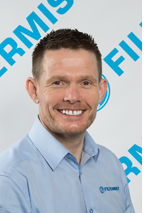Exposure to airborne oil mist, dust, smoke and fume particles commonly found in manufacturing facilities can cause a number of occupational diseases including skin conditions, respiratory problems and even cancer.
Protecting people from harm is vital for all employers and when it comes to making sure the air in factories is fit for breathing, manufacturers have a number of choices.
Oil mist and other harmful airborne hazards used to be removed using general ventilation, but this method is now generally discredited as it is not very effective. Local exhaust ventilation (LEV) which captures, contains and treats contaminated air at source before it has an opportunity to escape into the wider working environment, is now the industry standard and recommended by the Health and Safety Executive (HSE).
If manufacturers decide to install an LEV system there are three further options. They can choose local extraction which typically consists of one or two filtration units located on or next to each individual machine tool, cell-based extraction which can be used for manufacturing cells consisting of between three and ten machine tools, or they can opt for a centralised extraction system that removes contaminated air from large numbers of machine tools.
 All options have their own merits depending on the nature of the business. For example, some aerospace manufacturers such as Moog Aircraft Group prefer standalone systems as this approach allows the flexibility for their workshops to be re-configured for different projects if required. On the other hand, automotive manufacturers like Jaguar Land Rover’s Engine Manufacturing Centre sometimes choose centralised extraction systems as their production lines are static.
All options have their own merits depending on the nature of the business. For example, some aerospace manufacturers such as Moog Aircraft Group prefer standalone systems as this approach allows the flexibility for their workshops to be re-configured for different projects if required. On the other hand, automotive manufacturers like Jaguar Land Rover’s Engine Manufacturing Centre sometimes choose centralised extraction systems as their production lines are static.
Chris Harper, Project Manager for oil mist extraction systems specialist Filtermist, was responsible for securing and overseeing the specification, design, supply, installation and commissioning of an extensive centralised extraction system installed at Jaguar Land Rover’s Engine Manufacturing Centre.
This system is used to remove oil mist from the engine manufacturing processes throughout the 100,000m² facility and includes over 2.5km of clip ducting connected to 24 Absolent A.smoke80T filtration units and four A.Dust5 units.
Outlined below are ten factors that Chris advises should be taken into consideration when designing an extraction system.
- What materials are being processed (steel, aluminium)?
- What contaminants needs extracting (oil mist, smoke, dust or fume)?
- What type of machining processes are you intending to run with (wet, dry, MQL)?
- Will the extraction system need to comply with the ATEX Workplace Directive?
- What type of machine tools are used?
- How many machine tools need extracting from? Is this number likely to change in the foreseeable future?
- Are there any open or partially enclosed machines?
- Is the machine shop frequently re-configured or is it a static production line?
- How will the system be controlled (inverter driven PLCs)? Damper control valves should be considered to create a smart energy efficient system
- Should the clean air be returned to the factory or exhausted outdoors?
The answers to these questions will help you to decide on how your extraction system should be configured to ensure it meets your specific requirements and effectively cleans the air in your workplace.
It should also be noted that COSHH regulations require most LEV systems to be tested at least once every 14 months by a competent person. If you suspect that your extraction system is not performing effectively, a simple reading using an air monitoring device will either dispel or confirm your suspicion. It is always best to err on the side of caution to ensure workers are not exposed to harmful airborne contaminants.
Filtermist is part of the Swedish Absolent Group which also owns Absolent AB. Filtermist is an Absolent accredited UK distributor and provides a comprehensive aftersales service including routine maintenance and COSHH compliant LEV Testing for all types of LEV systems.